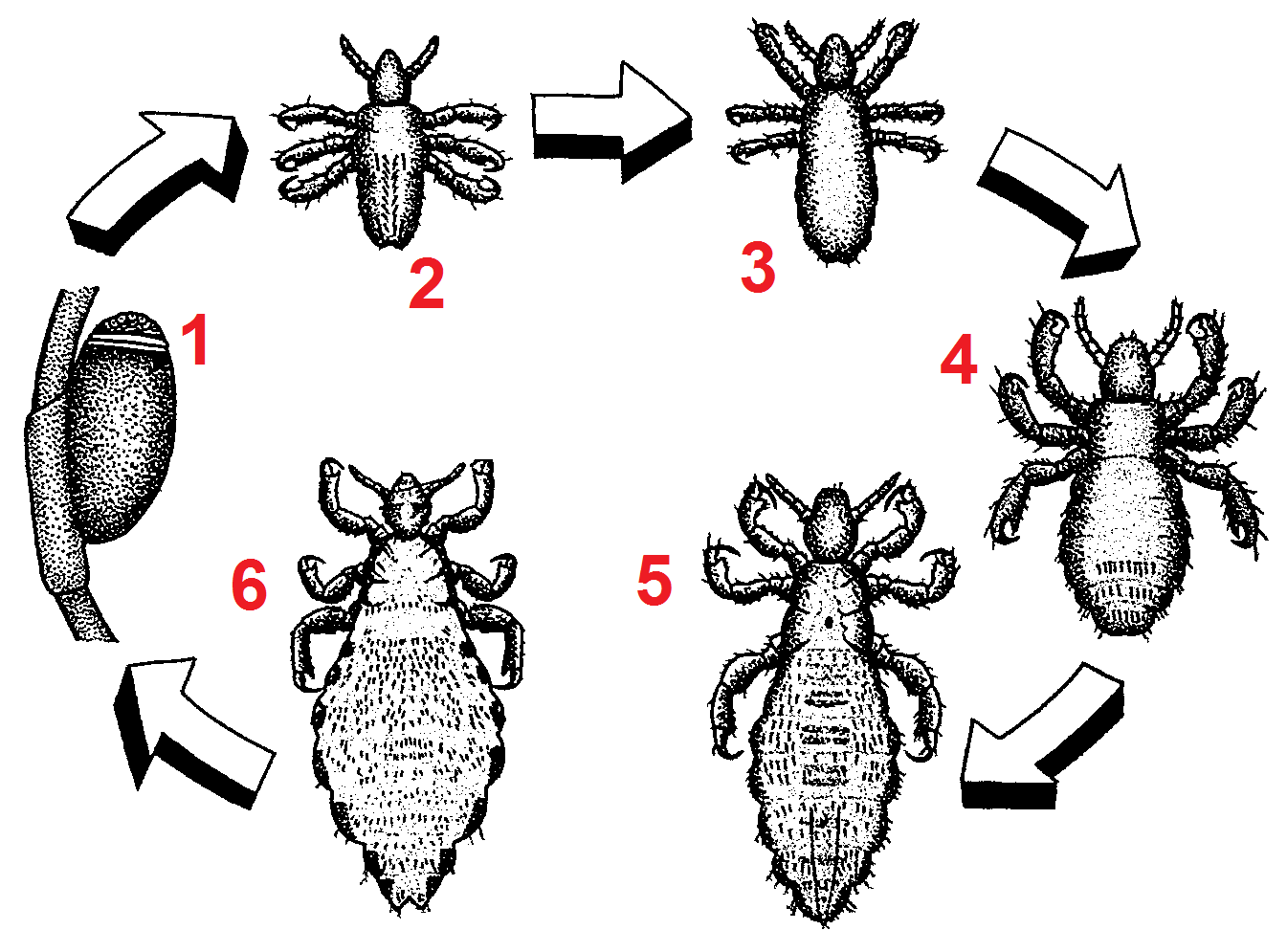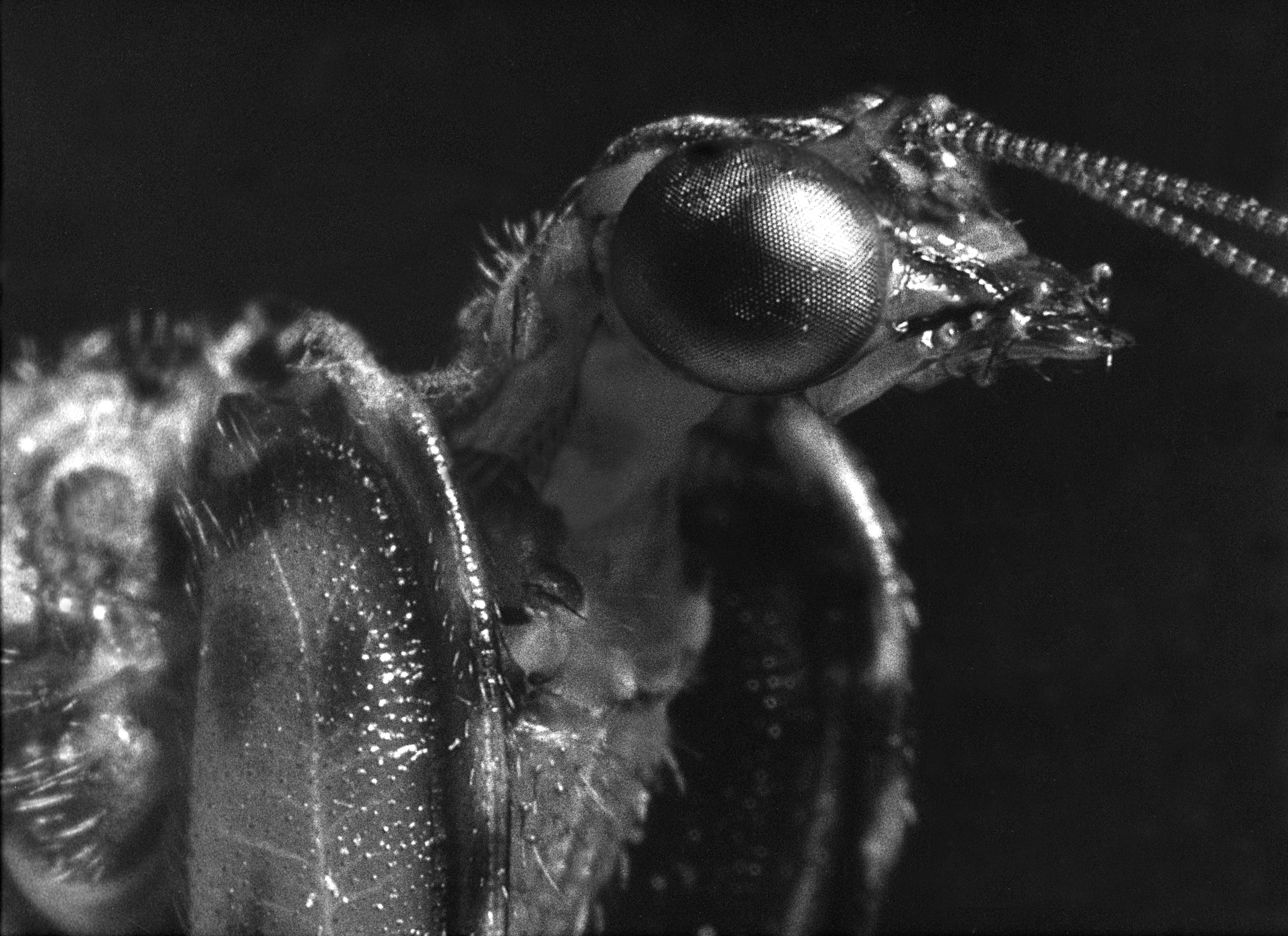|
Psocodea
Psocodea is a taxonomic group of insects comprising the bark lice, book lice and parasitic lice. It was formerly considered a superorder, but is now generally considered by entomologists as an order. Despite the greatly differing appearance of parasitic lice (Phthiraptera), they are believed to have evolved from within the former order Psocoptera, which contained the bark lice and book lice, now found to be paraphyletic. They are often regarded as the most primitive of the hemipteroids. Psocodea contains around 11,000 species, divided among four suborders and more than 70 families. They range in size from 1–10 millimetres (0.04–0.4 in) in length. The species known as booklice received their common name because they are commonly found amongst old books—they feed upon the paste used in binding. The barklice are found on trees, feeding on algae and lichen. Anatomy and biology Psocids are small, scavenging insects with a relatively generalized body plan. They feed ... [...More Info...] [...Related Items...] OR: [Wikipedia] [Google] [Baidu] |
Psocomorpha
Psocomorpha is a suborder of barklice, booklice, and parasitic lice in the order (biology), order Psocodea (formerly Psocoptera). There are more than 20 families and 5,300 described species in Psocomorpha. Phylogeny The below cladogram of Psocodea shows the position of Psocomorpha: Fossil record The oldest fossil record of the suborder is ''Burmesopsocus, Burmesopsocus lienhardi'' from the mid-Cretaceous (early Cenomanian) Burmese amber, which is not assigned to any family. Classification Psocomorpha contains 6 infraorders and 26 family (biology), families: *Archipsocetae ** Archipsocidae Pearman, 1936 (ancient barklice) *Caeciliusetae ** Amphipsocidae Pearman, 1936 (hairy-winged barklice) ** Asiopsocidae Mockford & Garcia Aldrete, 1976 ** Caeciliusidae Mockford, 2000 (lizard barklice) ** Dasydemellidae Mockford, 1978 (shaggy psocids) ** Paracaeciliidae Mockford, 1989 ** Stenopsocidae Pearman, 1936 (narrow barklice) *Epipsocetae ** Cladiopsocidae Smithers, 1972 ** Dolabellops ... [...More Info...] [...Related Items...] OR: [Wikipedia] [Google] [Baidu] |
Trogiomorpha
Trogiomorpha is one of the three major suborders of barklice, booklice, and parasitic lice in the order Psocodea (formerly Psocoptera), alongside Troctomorpha and Psocomorpha. There are about 8 families and more than 430 described species in Trogiomorpha. Trogiomorpha is widely agreed to be the earliest diverging of the three suborders, and retains the most primitive characteristics. Internal phylogeny The cladogram below shows the position of Trogiomorpha within Psocodea: Classification Trogiomorpha contains 3 infraorders and 5 extant (living) families, as well as three identified extinct families: * Atropetae ** Archaeatropidae Baz & Ortuño, 2000 ** Empheriidae Baz & Ortuño, 2000 ** Lepidopsocidae Enderlein, 1903 (scaly-winged barklice) ** Psoquillidae Lienhard & Smithers, 2002 (bird nest barklice) ** Trogiidae Roesler, 1944 (granary booklice) * Psyllipsocetae ** Psyllipsocidae Lienhard & Smithers, 2002 (cave barklice) * Prionoglaridetae (paraphyletic Paraphyly is a ta ... [...More Info...] [...Related Items...] OR: [Wikipedia] [Google] [Baidu] |
Psocoptera
Psocoptera () are a paraphyletic group of insects that are commonly known as booklice, barklice or barkflies. The name Psocoptera has been replaced with Psocodea in recent literature, with the inclusion of the former order Phthiraptera into Psocodea (as part of the suborder Troctomorpha). They are often regarded as the most primitive of the paraneopterans. There are more than 5,500 species in 41 families in three suborders. Many of these species have only been described in the early twenty-first century. They range in size from in length. The species known as booklice received their common name because they are commonly found amongst old books—they feed upon the paste used in binding. The barklice are found on trees, feeding on algae and lichen. Etymology Their name originates from the Greek word ψῶχος (''psokhos''), meaning " gnawed" or " rubbed" and πτερά (''ptera''), meaning " wings". Classification In the 2000s, morphological and molecular phylogenetic evid ... [...More Info...] [...Related Items...] OR: [Wikipedia] [Google] [Baidu] |
Paraneoptera
Paraneoptera or Acercaria is a Order (biology), superorder of insects which includes Psocodea, lice (Psocoptera, bark lice and Louse, true lice), thrips, and hemipterans, the true bugs. It also includes the extinct order Permopsocida, known from fossils dating from the Cisuralian, Early Permian to the mid-Cretaceous. All of the insects classified here exhibit various “reductions” or “simplifications” from the primitive body-plan found in typical polyneopterans. Cercus, Cerci, for example, are entirely absent in all living paraneopterans (Acercaria meaning without cerci). Other “reductions” occur in wing venation, in the number of tarsal segments (no more than three), only four Malpighian tubules, and only one complex of abdominal ganglia. The mouthparts of the Paraneoptera reflect diverse feeding habits. Basal groups are microbial surface feeders, whereas more advanced groups feed on plant or animal fluids. Phylogeny Paraneoptera consists of Psocodea (lice), along ... [...More Info...] [...Related Items...] OR: [Wikipedia] [Google] [Baidu] |
Troctomorpha
Troctomorpha is one of the three major suborders of Psocodea (formerly Psocoptera)(barklice, booklice, and parasitic lice), alongside Psocomorpha and Trogiomorpha. There are more than 30 families and 5,800 described species in Troctomorpha. The order includes parasitic lice, which are most closely related to the booklice family Liposcelididae. Cladogram Cladogram showing the position of Troctomorpha within Psocodea: Fossil record The oldest record of the suborder is suggested to be '' Paramesopsocus adibi,'' known from the Late Jurassic Karabastau Formation of Kazakhstan. Classification Troctomorpha contains the following subgroups: * Infraorder: Amphientometae ** Family: Amphientomidae Enderlein, 1903 (tropical barklice) ** Family: Compsocidae Mockford, 1967 ** Family: Electrentomidae Enderlein, 1911 ** Family: Manicapsocidae Mockford, 1967 ** Family: Musapsocidae Mockford, 1967 ** Family: Protroctopsocidae Smithers, 1972 ** Family: Troctopsocidae Mockfor ... [...More Info...] [...Related Items...] OR: [Wikipedia] [Google] [Baidu] |
Phthiraptera
Louse (: lice) is the common name for any member of the infraorder Phthiraptera, which contains nearly 5,000 species of wingless parasitic insects. Phthiraptera was previously recognized as an order, until a 2021 genetic study determined that they are a highly modified lineage of the order Psocodea, whose members are commonly known as booklice, barklice or barkflies. Lice are obligate parasites, living externally on warm-blooded hosts, which include every species of bird and mammal, except for monotremes, pangolins, and bats. Chewing lice live among the hairs or feathers of their host and feed on skin and debris, whereas sucking lice pierce the host's skin and feed on blood and other secretions. They usually spend their whole life on a single host, cementing their eggs, called nits, to hairs or feathers. The eggs hatch into nymphs, which moult three times before becoming fully grown, a process that takes about four weeks. Humans host two species of louse—the head louse an ... [...More Info...] [...Related Items...] OR: [Wikipedia] [Google] [Baidu] |
Lice
Louse (: lice) is the common name for any member of the infraorder Phthiraptera, which contains nearly 5,000 species of wingless parasitic insects. Phthiraptera was previously recognized as an order, until a 2021 genetic study determined that they are a highly modified lineage of the order Psocodea, whose members are commonly known as booklice, barklice or barkflies. Lice are obligate parasites, living externally on warm-blooded hosts, which include every species of bird and mammal, except for monotremes, pangolins, and bats. Chewing lice live among the hairs or feathers of their host and feed on skin and debris, whereas sucking lice pierce the host's skin and feed on blood and other secretions. They usually spend their whole life on a single host, cementing their eggs, called nits, to hairs or feathers. The eggs hatch into nymphs, which moult three times before becoming fully grown, a process that takes about four weeks. Humans host two species of louse—the head lou ... [...More Info...] [...Related Items...] OR: [Wikipedia] [Google] [Baidu] |
Body Louse
The body louse (''Pediculus humanus humanus'', also known as ''Pediculus humanus corporis'') or the cootie is a hematophagic ectoparasite louse that infests humans. It is one of three lice which infest humans, the other two being the head louse, and the crab louse or pubic louse. Body lice may lay eggs on the host's hairs and clothing, but clothing is where the majority of eggs are usually secured. Since body lice cannot jump or fly, they spread by direct contact with another person or more rarely by contact with clothing or bed sheets that are infested. Body lice are disease vectors and can transmit pathogens that cause human diseases such as epidemic typhus, trench fever, and relapsing fever. In developed countries, infestations are only a problem in areas of poverty where there is poor body hygiene, crowded living conditions, and a lack of access to clean clothing. Outbreaks can also occur in situations where large groups of people are forced to live in unsanitary c ... [...More Info...] [...Related Items...] OR: [Wikipedia] [Google] [Baidu] |
Insect
Insects (from Latin ') are Hexapoda, hexapod invertebrates of the class (biology), class Insecta. They are the largest group within the arthropod phylum. Insects have a chitinous exoskeleton, a three-part body (Insect morphology#Head, head, Thorax (insect anatomy), thorax and abdomen (insect anatomy), abdomen), three pairs of jointed Arthropod leg, legs, compound eyes, and a pair of antenna (biology), antennae. Insects are the most diverse group of animals, with more than a million described species; they represent more than half of all animal species. The insect nervous system consists of a insect brain, brain and a ventral nerve cord. Most insects reproduce Oviparous, by laying eggs. Insects Respiratory system of insects, breathe air through a system of Spiracle (arthropods), paired openings along their sides, connected to Trachea#Invertebrates, small tubes that take air directly to the tissues. The blood therefore does not carry oxygen; it is only partly contained in ves ... [...More Info...] [...Related Items...] OR: [Wikipedia] [Google] [Baidu] |
Stenopsocidae
Stenopsocidae is a family of Psocoptera belonging to the suborder Psocomorpha Psocomorpha is a suborder of barklice, booklice, and parasitic lice in the order (biology), order Psocodea (formerly Psocoptera). There are more than 20 families and 5,300 described species in Psocomorpha. Phylogeny The below cladogram of Psoco ..., in the infraorder Caeciliusetae. Member of this family have an areola postica connected to the M vein by a crossvein. The family is composed of about 100 species. References *Lienhard, C. & Smithers, C. N. 2002. Psocoptera (Insecta): World Catalogue and Bibliography. Instrumenta Biodiversitatis, vol. 5. Muséum d'histoire naturelle, Genève. Psocoptera families {{Psocoptera-stub ... [...More Info...] [...Related Items...] OR: [Wikipedia] [Google] [Baidu] |
Compound Eyes
A compound eye is a visual organ found in arthropods such as insects and crustaceans. It may consist of thousands of ommatidia, which are tiny independent photoreception units that consist of a cornea, lens, and photoreceptor cells which distinguish brightness and color. The image perceived by this arthropod eye is a combination of inputs from the numerous ommatidia, which are oriented to point in slightly different directions. Compared with single-aperture eyes, compound eyes have poor image resolution; however, they possess a very large view angle and the ability to detect fast movement and, in some cases, the polarization of light. Because a compound eye is made up of a collection of ommatidia, each with its own lens, light will enter each ommatidium instead of using a single entrance point. The individual light receptors behind each lens are then turned on and off due to a series of changes in the light intensity during movement or when an object is moving, creating a flic ... [...More Info...] [...Related Items...] OR: [Wikipedia] [Google] [Baidu] |





